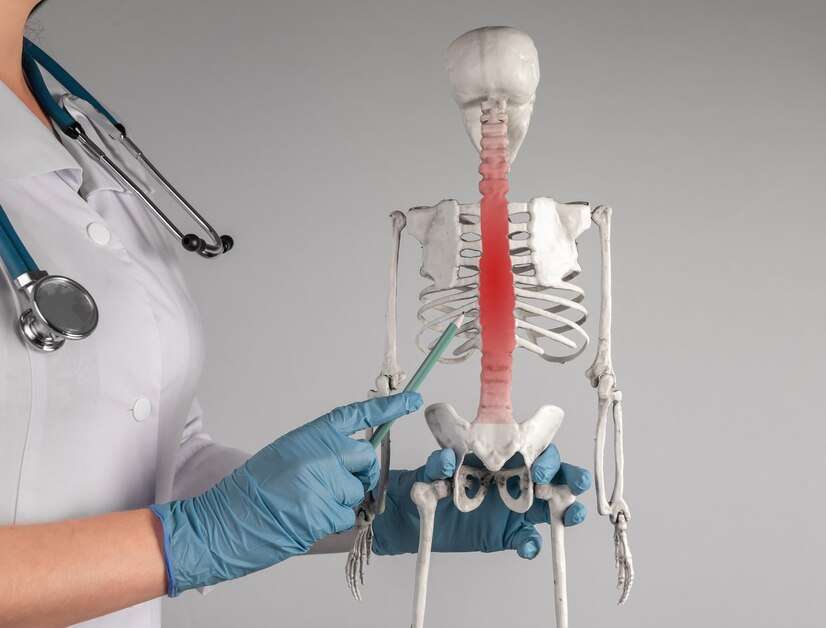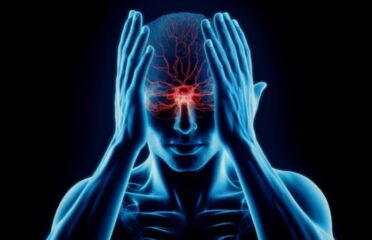Spinal Cord Infarction
Overview

Spinal cord infarction stems from ischemia in an extra-vertebral artery, triggering a sudden and intense onset of symptoms. Those affected experience immediate and severe back pain, followed by rapidly progressing bilateral flaccid limb weakness and diminished sensation, especially to pain and temperature. Diagnosis heavily relies on magnetic resonance imaging (MRI) to visualize the affected areas. Unfortunately, there is currently no specific cure for spinal cord infarction, and treatment primarily involves supportive care to alleviate symptoms and enhance overall well-being. Recognizing the critical nature of this condition, timely identification and appropriate intervention are crucial factors in optimizing outcomes for individuals grappling with spinal cord infarction.
Symptoms
-Onset and Symptoms: Spinal cord infarction often begins with sudden back pain, radiating tightness, followed swiftly by bilateral flaccid weakness and sensory loss, particularly impacting pain and temperature sensations.
-Affected Artery and Syndrome: Typically involving the anterior spinal artery, the condition manifests as anterior cord syndrome. Posterior columns, responsible for position and vibration sensation, remain relatively spared, along with often preserved light touch.
-Central Cord Syndrome: In cases where the infarct is small, affecting tissue away from the occluded artery, a central cord syndrome may occur, further diversifying clinical presentations.
-Potential Recovery: Neurological deficits might experience partial resolution in the initial days following the onset of spinal cord infarction.
Causes & Risks
-Causes:
Blood vessel blockage: Interrupt blood flow due to a clot or atherosclerosis.
Blood vessel inflammation: Conditions like vasculitis can damage spinal cord blood vessels.
Trauma: Injuries reducing spinal cord blood flow can lead to infarction.
-Risks:
Atherosclerosis, inflammation, or other vascular diseases heighten the risk, and Conditions affecting clotting elevate the risk.
Hypertension or heart disease impacts spinal cord blood flow. Tobacco use contributes to vascular problems, increasing risk.
Advancing age raises susceptibility to vascular issues. Previous strokes or vascular problems may heighten the risk.
Test & Diagnosis
Sudden onset of severe back pain and distinctive deficits may indicate the presence of infarction. An MRI is the preferred diagnostic tool for spinal cord infarction, but if unavailable, CT myelography can be performed. While conditions like acute transverse myelitis, spinal cord compression, and demyelinating disorders may present with similar symptoms, they typically develop more gradually and can be ruled out through MRI and cerebrospinal fluid (CSF) analysis.
Treatment
-Supportive Care: The primary approach involves providing supportive care for patients with infarction.
-Identifying Underlying Causes: Occasionally, treatable causes like aortic dissection or polyarteritis nodosa can be identified and addressed.
-Limited Treatment Options: In many cases, the only viable option is supportive care due to the nature of the infarction.
-Holistic Patient Support: Supportive measures aim to alleviate symptoms and provide comprehensive care, considering the underlying cause when possible.
Living With
Spinal cord infarction is a condition with a highly variable prognosis that depends on factors such as the degree and location of the injury, as well as the overall health of the individual. The speed at which the diagnosis is made and treatment is provided also plays a significant role in the recovery process. Some individuals may experience only partial functional recovery following rehabilitation and therapy, while others may face long-term neurological deficits. Severe cases of spinal cord infarction can result in lasting impairments and limitations. Treatment options can include supportive care, rehabilitation, and addressing complications to improve the individual's quality of life. Given the complexity of the condition, a multidisciplinary approach is essential to navigate the challenges and optimize outcomes for those affected.
Complications
-Permanent neurological deficits: Spinal cord infarction can cause lasting neurological impairments such as paralysis, sensory loss, or loss of bowel and bladder control.
-Chronic pain: Some individuals may experience persistent, difficult-to-treat pain at the site of the infarction or in surrounding areas.
-Functional limitations: Mobility, coordination, and daily activities might be significantly affected, leading to practical limitations.
-Respiratory problems: Severe cases of spinal cord infarction may affect respiratory muscles, leading to breathing difficulties or respiratory failure.
-Psychological impact: Coping with the challenges of permanent disability and altered lifestyle can lead to emotional distress, depression, or anxiety.
-Medical complications: Individuals with spinal cord infarction are at risk of developing secondary medical complications like pressure sores, urinary tract infections, or blood clots due to reduced mobility.





